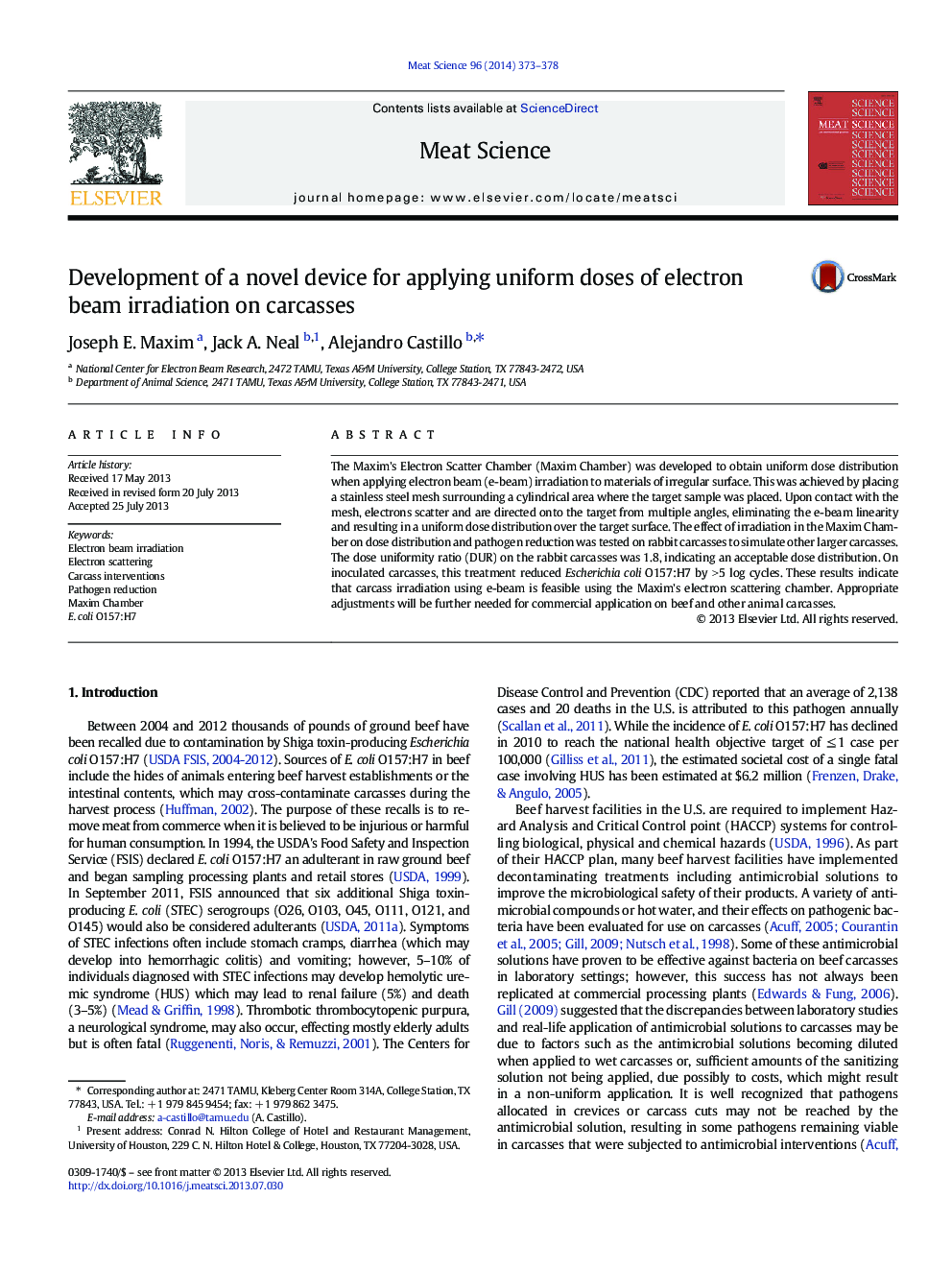| Article ID | Journal | Published Year | Pages | File Type |
|---|---|---|---|---|
| 5791483 | Meat Science | 2014 | 6 Pages |
â¢The Maxim's Electron Scatter Chamber (Maxim Chamber) enables adequate electron beam irradiation of carcasses.â¢Electron beam irradiation reduced Escherichia coli O157:H7 by > 5 log cycles on model rabbit carcasses.â¢Different from carcass sprays, irradiation using the Maxim Chamber reduced pathogens allocated under the surface and in carcass cuts.
The Maxim's Electron Scatter Chamber (Maxim Chamber) was developed to obtain uniform dose distribution when applying electron beam (e-beam) irradiation to materials of irregular surface. This was achieved by placing a stainless steel mesh surrounding a cylindrical area where the target sample was placed. Upon contact with the mesh, electrons scatter and are directed onto the target from multiple angles, eliminating the e-beam linearity and resulting in a uniform dose distribution over the target surface. The effect of irradiation in the Maxim Chamber on dose distribution and pathogen reduction was tested on rabbit carcasses to simulate other larger carcasses. The dose uniformity ratio (DUR) on the rabbit carcasses was 1.8, indicating an acceptable dose distribution. On inoculated carcasses, this treatment reduced Escherichia coli O157:H7 by >Â 5 log cycles. These results indicate that carcass irradiation using e-beam is feasible using the Maxim's electron scattering chamber. Appropriate adjustments will be further needed for commercial application on beef and other animal carcasses.
